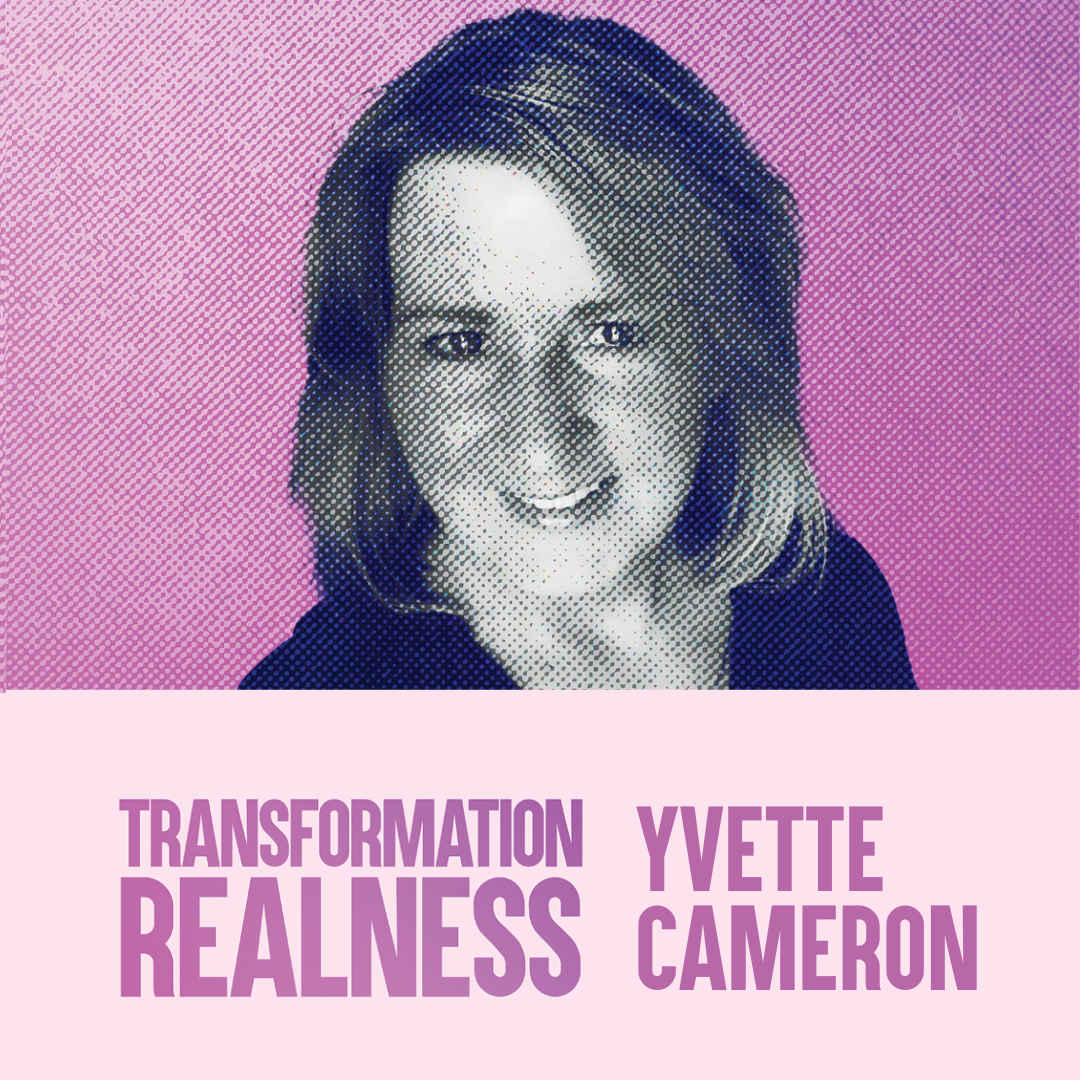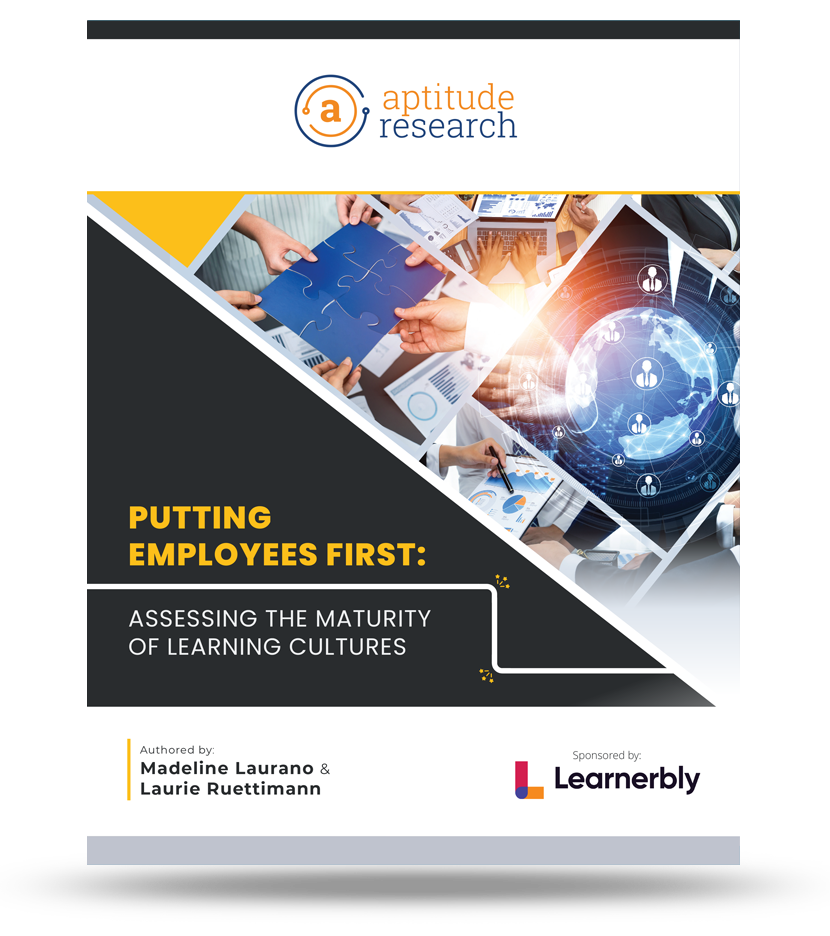On this episode of Transformation Realness, I’m joined by none other than Yvette Cameron, Senior Vice President of Cloud HCM Product Strategy at Oracle. Yvette is a visionary (and certified badass) reshaping workforce technology with a focus on what actually matters: skills, culture, and empowering managers to lead in a rapidly changing world.
We tackle big questions about how skills fit into the bigger picture of talent strategies, the challenges facing today’s managers, and the incredible potential of generative AI to transform work — without getting lost in the hype. If you’ve ever wondered whether technology can solve your talent problems, let me just say: it can help — but no app is going to fix a broken culture.
If you’re ready to think bigger about the future of work, this conversation is for you.
Skills Aren’t Just for TA and L&D
If you’ve rolled your eyes at every “skills-based” solution on the market, you’re not alone — I’ve been right there with you. But Yvette sets the record straight: “There are so many ‘solutions’ … on the market that focus on skills-based recruiting, or skills-based learning,” she says. “And when you have these siloed systems that are focused on that one process, you can improve the process. But skills don’t stop when you hire people.” You need skills data for scheduling, planning, upskilling, budgeting — it’s about integration, not silos.
The real magic happens when skills data becomes foundational across the organization. From aligning workforce planning with future needs to creating intentional upskilling opportunities, Yvette says it’s time to stop thinking of skills as just a recruitment or learning tool — and start using them to drive strategy.
That’s why, under Yvette’s visionary eye, Oracle has adopted a more comprehensive approach that lets companies aggregate skills into a system of record. Collecting skills data across the spectrum of HR processes provides data that’s richer and more accessible. The result? You have the foundations of a strategy, not just an idea.
Managers Need More Than “Self-Service”
Let’s talk about managers — the unsung heroes holding it all together. “Managers are the ones who know how the real work gets done, right?” Yvette says. “They know the tasks that their people have to perform. They know the unique skills and qualifications that they need.” While HR plays a critical role as architects of people strategy, we sometimes lose sight of the people on the other side.
New tools and processes are great, but managers are already overloaded, so anything we add needs to tie back to a clear business benefit — and especially answer your managers’ “What’s in it for me?”
When HR leaders tell her they’ve adopted self-service modules to make the managers’ lives easier, for example, Yvette is quick to counter that assumption. “I say, ‘Is it really self-service? Are you putting your work on your managers, or are you giving them direct access to the information and support, and processes that they need?’” she says. “And I think that’s a fundamental mind-shift, right? Is it HR work, or is it really empowering managers?”
And this is where technology can shine. AI can nudge managers with reminders to check in with their team or even suggest agenda topics for those meetings. But as Yvette wisely notes, no tech can replace empathy, trust and a willingness to share talent across teams. Culture trumps tech every time.
GenAI: Transformative, But Not a Cure-All
It wouldn’t be Transformation Realness without a little GenAI talk. Yvette’s take? Game-changing potential, but tread carefully. Oracle’s approach includes agents that automate low-risk tasks (like scheduling) and provide managers with real-time answers and insights. But Yvette stresses that people are still core to the process. “We don’t like to take the human out of the loop,” she says.
And for all its promise, GenAI is no silver bullet. If your managers still have a talent hoarding attitude, for instance, introducing an AI-enabled talent marketplace won’t have the impact you want it to. “That’s a culture and a business process that has to be addressed,” she says.
Yvette brought the fire in this conversation, reminding us that transformation is about more than just tools — it’s about building the right foundation, empowering people and addressing the cultural barriers holding us back.
Stay tuned for more Transformation Realness, and remember: transformation isn’t something you buy — it’s something you build.
People in This Episode
- Yvette Cameron: LinkedIn
Transcript
Kyle Lagunas:
Hello, my little blueberries. Welcome to another very special episode of Transformation Realness, the only show all about people who are working to make the world of work less shitty, and who are brave enough to tell their stories: the good, the bad, and most of all, the real.
It’s produced in partnership with Rep Cap and hosted by none other than yours truly, the ever so charming and ecclesiastical, Kyle Lagunas, Head of Strategy and Principal Analyst at Aptitude Research. The boutique firm leading the charge in HR tech in transformation.
Get into it!
Before I jump in, I have to say a special thank you to the team over at Glider AI, whose sponsorship made our Talent Transformation Ecosystem, EP possible. Thanks, fam.
Today’s guest is one of my favorite people in our industry, a longtime friend and personal mentor, Yvette Cameron, Senior Vice President of Cloud HCM Product Strategy at Oracle, just this tiny little tech startup you’ve never heard of. No, seriously, this powerhouse is shaping the future of workforce technology, making sure it’s not just buzzwords and feature dumps, but real strategies that move the needle in our space.
From skills-based workforce planning to the growing influence of GenAI, Yvette is here to share with us what’s really going on in the space. Plus there’s some super fabulous insight about the challenges that managers today are dealing [with], as they’re navigating this changing world themselves. Are we empowering them, or just giving them more stuff to do? Big questions, real answers, buckle up kids, this is going to be a good one.
I am joined by one of the baddest bitches in the space. Hi, Yvette Cameron.
Yvette Cameron:
Hello Kyle. So good to see you.
Kyle Lagunas:
Always good to see you. It’s always a pleasure.
Yvette Cameron:
I love being introduced as one of the baddest bitches. I actually really love that.
Kyle Lagunas:
But you know it’s so true. For those who don’t know, what is your job? What do you do?
Yvette Cameron:
So I’m the Senior Vice President for Oracle’s Cloud, HCM Product Strategy. So my team is out there visioning, “Where are we going to go in the next 12, 18, 24 months, three years?” Five years is a little more difficult. Things are changing so fast.
Kyle Lagunas:
I mean, especially now.
Yvette Cameron:
Yeah.
Kyle Lagunas:
I don’t even know if you can really do 18 months?
Yvette Cameron:
You can-
Kyle Lagunas:
Look at this last 18-month cycle.
Yvette Cameron:
I know, but you know what? Flexibility is the story, right? And a strong strategy for where the technology’s taking us.
Kyle Lagunas:
Yeah. Agility is the only way to be now, right? That’s where resilience comes from. Well, tell me about your session? What did you talk about?
Yvette Cameron:
I would love to talk about the session, but I actually want to start with the elephant in the room, Kyle? There’s something we have to cover first.
Kyle Lagunas:
Oh, my God. What is it?
Yvette Cameron:
It’s huge. The fact that you were on the cover of New York Times recently? Oh, my gosh. I looked and I saw your face and I was like, “Wait a minute”-
Kyle Lagunas:
Man.
Yvette Cameron:
… “isn’t that Kyle?”
Kyle Lagunas:
You know.
Yvette Cameron:
Sweetie? So congratulations on that.
Kyle Lagunas:
Thank you. We’ve been friends for a long time. For those who don’t know, I started as a little humble blogger. I actually have worked really hard to get where… We both have, right? But it was so validating, it was really cool. You know the coolest part? They came to my house, girl? And while they’re taking my picture… Which by the way, I cleaned the entire house, and then he wanted to take pictures in the backyard.
Yvette Cameron:
And was that your cat there? I loved that.
Kyle Lagunas:
Yes. So we’re sitting there taking pictures, my cat just walks over and sits down and he’s like, “What’s up dorks? What are you guys doing?” He looked so regal. He’s just like… And my arms look huge. I’m like…
Yvette Cameron:
That was awesome. So congratulations. Well, I didn’t like the way that they said that you had a little rant going on about [managing HR].
Kyle Lagunas:
Whatever.
Yvette Cameron:
So whatever. But it was fantastic-
Kyle Lagunas:
That was a microaggression-
Yvette Cameron:
… congratulations.
Kyle Lagunas:
… against gays.
Yvette Cameron:
Oh. Okay well, that’s another podcast.
Kyle Lagunas:
I know. That is another podcast. All right, but talk to me about your session? Seriously, because it’s like standing room only at HR Tech, I mean that’s huge. Especially because… And no offense, but you’ve been an analyst… People don’t always want to go and hear from vendors?
Yvette Cameron:
Yeah.
Kyle Lagunas:
Right?
Yvette Cameron:
You know, when I’m speaking and when most of my team is speaking, we really try to bring the thought leadership, and really how do we succeed in this market? Of course, there’s a bit of how our technology can support these strategies.
Kyle Lagunas:
That’s why you’ve chosen where you land it, right?
Yvette Cameron:
Exactly. Exactly. And so my session was Five Keys to Unlocking Workforce Potential, and of course it comes down to experience. Which is also supported by today’s latest generative AI capabilities, ensuring a solid skills foundation to drive engagement and opportunity across the organization. Experience is also around empowering managers to be more people-centric-
Kyle Lagunas:
Work, yes.
Yvette Cameron:
… and empathetic leaders. And so we talked about that.
Kyle Lagunas:
Yes.
Yvette Cameron:
And then of course, really focused on the data of the organization. And one of the biggest challenges I think HR has, is moving from data to insights, to taking action-
Kyle Lagunas:
Oh, yeah.
Yvette Cameron:
… on that data. So it was a really compelling session. I think the HR Tech people recorded it, and hopefully it’ll be available online somewhere soon.
Kyle Lagunas:
I’m so sorry I missed it. I had to go to an-
Yvette Cameron:
I will send it to you first thing.
Kyle Lagunas:
Oh, yeah. I mean honestly, I want to see the deck. I know, especially because I love when thought leadership is being driven by somebody that’s so accomplished, but also sits and has such a huge purview in the market. Almost 100% aligns with research that I’m doing. It’s really validating. I mean, so I’m not going to lie, I was getting really sick of skills-based everything. I was getting extremely cynical the last year, because it seemed like the new employee experience.
It was just like a catch-all, we were talking like, “Oh, this is going to make magic. It’s going to do all kinds of things.” And I just really wasn’t seeing it. Especially because I saw solution providers, not Oracle, but I did see some solution providers in the space that were almost making false promises, over simplifying this. They were saying, “Oh, if you buy our software, you’ll have skills-based everything.” Right? And you and I know that doesn’t work, so I was getting kind of cynical, I’m like, “I don’t know if this is a thing?” It’s a thing, baby.
Yvette Cameron:
It is a thing. But I think your cynicism is well-placed, because there are so many solutions, and I say that with quotes around it on the market, that focus on skills-based recruiting, or skills-based learning. And when you have these siloed systems that are focused on that one process, you can improve the process. But skills don’t stop when you hire people. You need to be able to schedule people according to skills, that’s critical in the healthcare industry.
You need to budget and plan, based on the skills need of the future. And that comes not just from the skills you’re bringing into the organization, but the way you’re driving upskilling, and learning and development. You need that skills-based learning. Skills-based learning alone isn’t enough, right? As there’s just skills even in how you’re managing your people, and the performance reviews-
Kyle Lagunas:
Oh, absolutely.
Yvette Cameron:
… and stuff that involves-
Kyle Lagunas:
Imagine if you’re-
Yvette Cameron:
… it’s just impossible.
Kyle Lagunas:
… only doing skills in learning, and then you’re not actually evaluating skills and performance?
Yvette Cameron:
Exactly. Exactly. So we talked about that in my session-
Kyle Lagunas:
Cool.
Yvette Cameron:
… yesterday, and one of our big points-
Kyle Lagunas:
That’s why it is ubiquitous, right?
Yvette Cameron:
It is. It is. And one of our press releases this year recently at our CloudWorld, was an announcement about how our investment in skills has broadened. So in the past, like many others, we took an approach of, “Here’s our skills ontology, here’s our AI that’s going to enrich the skills. And here’s how we have infused skills across everything in the HCM suite.”
But what we missed was the reality that there are still many organizations who, despite our being an end-to-end suite, are using that one solution outside, that’s in recruiting or learning or XYZ space, or multiple. I was talking with an organization the other day, who partners with an organization focused on the needs of manufacturing. The very unique skills, they have a subscription for that. Those change, there’s-
Kyle Lagunas:
Shifting landscape of skills needs in manufacturing.
Yvette Cameron:
Exactly. The shifting. And so our approach now, is that we are an open skills aggregation platform. And there’s a lot of goodness around that, and I won’t pitch that here on this podcast, but I will say-
Kyle Lagunas:
Oh, pitch baby. Just kidding.
Yvette Cameron:
… there are differences. I was talking to a couple of other analysts and unlike you, I’m hearing, “Oh, but everybody’s got skills. Everybody’s got AI and GenAI, everybody’s doing the same thing.” We’re not. The approach that the different vendors, and that Oracle is taking. I think especially because we’re not only an applications vendor, we’re a technology vendor.
Kyle Lagunas:
Oh, yeah.
Yvette Cameron:
It gives us the-
Kyle Lagunas:
With deep-
Yvette Cameron:
… opportunity to do things differently.
Kyle Lagunas:
… industry, vertical expertise.
Yvette Cameron:
Deep industry vertical-
Kyle Lagunas:
Yeah, yeah, yeah.
Yvette Cameron:
… right. So I think this is a huge space. Skills are incredibly important for organizations to really make sure they’ve got that agility that we opened with, in the future.
Kyle Lagunas:
But also it enables the intentionality with workforce planning. I’m not just looking for heads, what are these people going to do? What are the skills that are… What skills risks do we have? Or what skills opportunities do we have, right?
Yvette Cameron:
Skills are changing so quickly. One of my quotes yesterday was that over 62% of the workforce is quiet quitting. Pretty disengaged. In fact, I read that in the UK that number is an astonishing 92%. And how do you combat disengagement? One thing, is, you reach out to your workforce and you say, “Hey, grow with us. If we up-skill in these areas, here are some opportunities for you to grow.” And without a skills infrastructure and across all of your opportunities, again in scheduling and learning, and the way you’re recruiting, et cetera, your just-
Kyle Lagunas:
But it’s just a good idea?
Yvette Cameron:
… in little pieces. That’s a great way to say it. It’s an idea as opposed to a strategy, that you can really execute on.
Kyle Lagunas:
Yeah. Well, so as you’re talking, I’m thinking, “All right, for a long time you’ve been watching the HCM space, for a long time you’ve been in the HCM space as a solution provider consultant, we’ve looked at what are foundational aspects of an HCM suite,” right? And you’re like, “All right, well, you got to have learning. You got to have TA, you got to have performance.” We’re thinking about the apps that you need to be that suite? You’ve got to be cloud, and maybe on-prem too?
There’s just things that we’ve thought about were core parts of that architecture. Actually, skills is a foundational aspect I think, of the modern HCM suite. You are that platform, and whether they’re going all in with you, or if they are plugging in other little things that are solving very specific problems that they just like. All of those things, skills needs to be relevant and standardized from learning to TA, from the front end to the back end. You know what I mean? And that’s more than just a philosophical conversation. That’s a data conversation, right?
Yvette Cameron:
It’s a data conversation for sure. And that’s why our approach is to bring skills that we deliver, or that you organically build through AI understanding how the skills-
Kyle Lagunas:
Or with a consultancy, you build your own special taxonomy?
Yvette Cameron:
You bring in libraries from different sources, an Eightfold or a TechWolf or any of these other solutions. Bring them into the same system of record where your people, your work data, and your job architecture is. Because when all of that is in the core system of record, then your opportunity to understand and really leverage it-
Kyle Lagunas:
And activate it?
Yvette Cameron:
… is phenomenal. You can activate it, exactly.
Kyle Lagunas:
So one thing that I also was noticing about skills, which is why I think it had in my opinion, a rough go at the beginning. Where you like… were going in stops and starts, there was a lot of conversation, but not a lot of impact. Part of it was, we were solving this at a use case level: TA, learning. And what we were doing over in TA, might not actually had bought in an alignment with our skills concepts across the business, or in learning too? Do you remember competency models, when these were the big things?
Yvette Cameron:
I do, it’s painful.
Kyle Lagunas:
How much work went into it? HR came over here and brought their… We really poured our hearts into this and our minds, we were feeling so good about what we built. And then we bring it to the business and they’re like, “What the hell is this?”
Yvette Cameron:
I know I told the story in my session yesterday. I remember back in the late ’90s, early 2000, getting my competency library CD, I would plug it in, we’d unplug it-
Kyle Lagunas:
Oh, my God. Yeah.
Yvette Cameron:
… and we’d get an update from the vendor every six to 12 months. Those days are so, so far gone.
Kyle Lagunas:
Well, but you know what’s not far gone? That HR still needs to make sure that what they’re innovating, and what they’re dreaming up, is relevant to the business?
Yvette Cameron:
You know, that’s absolutely true. But I would say that it’s not just on the shoulders of HR.
Kyle Lagunas:
Go on.
Yvette Cameron:
So managers are the ones who know how the real work gets done, right? They know the tasks that their people have to perform. They know the unique skills and qualifications that they need. HR is great, and needs to be setting foundational and top-down instructions on what we need in the organization. And what learning we need, and what specific skills for particular jobs. But more and more, work is shifting very rapidly, and it’s really the business leaders and the managers who know the actual tasks of the work.
And that’s one of the areas that we’ve invested, is making sure that managers are able to define their own needs for their team, what skills, and how do you build them? And think about it, HR is busy bringing libraries in and saying, “Here’s how you’re going to develop those skills.” But my strategy team is different than the strategy team over in customer support, or in supply chain, where at different levels of product maturity, we’ve got different responsibilities, a little bit than the other teams?
Kyle Lagunas:
Some things are more complicated than others.
Yvette Cameron:
And so I’m out there telling and assigning to my team, “I want you to build these particular skills,” and the sources might be going out and reading Kyle’s blog, or subscribing to this report, reading this book, and other things that HR has no insight to. Now, through the investments we’ve made in Oracle, managers can do that. And what HR gets from it, is a view across the enterprise of those hotspots of skills that are growing. They can see them associated with key roles.
They’re seeing the resources that are starting to surface, and when they see commonality, they can create new learning programs and skills development. So a bottoms-up approach to identifying what skills really are defining the work of the business that matter, and then looking for the resources. And if they’re going to be ad hoc, that’s great, but if there is a commonality, let’s spread that and make that an official HR mandated or supported policy.
Kyle Lagunas:
Yeah, let’s scale that out. Yeah. No, I really like it. I mean, honestly, there’s so much on the shoulder of managers these days, so much. And HR is bringing them something new, and it’s just more work, you know?
Yvette Cameron:
And it feels like-
Kyle Lagunas:
… “well, thanks for more HR stuff.” We got to make sure that this is not that. That’s what I said, it has to be relevant to the business, it has to have immediate tangible value. Otherwise it’s just like, “Well, why am I going to do this?”
Yvette Cameron:
So one of the first things when I talk to organizations, and they’re talking about their manager self-service, when I’m talking to an HR leader. I say, “Is it really self-service? Are you putting your work on your managers, or are you giving them direct access to the information and support, and processes that they need?” And I think that’s a fundamental mind-shift, right? Is it HR work, or is it really empowering managers?
Kyle Lagunas:
Yeah. But we haven’t been able to deliver that in the past. That’s why, I mean… Look, we’ve been studying innovation cycles, I don’t think I’ve ever seen anything as explosive as GenAI has been for us. And so talking about like, “Are we giving them immediate access?” Like agents, right? Where I’m going to have a conversational interface and I’m going to say, “Hey, so-and-so is about to go on maternity leave. What am I supposed to do as a manager for this?”
And I’m going to try to get my HR business partner to talk to me? No. I’m going to go to this chat interface and I’m going to say something in my natural language and it’s not going to say, “Go to the HR handbook, the employee handbook.” Instead it’s going to pull up that article, right? This one actually, I loved, like you guys were showing us, it’s going to give me an answer, and then I’ll actually be able to click to go in, and see where did this come from?
Yvette Cameron:
See the source doc then.
Kyle Lagunas:
Yeah. Where did-
Yvette Cameron:
Right.
Kyle Lagunas:
… this come from, right? So that enablement, that immediate access and support, that is transformative, right?
Yvette Cameron:
It really is. And this is where I caution the buyers in the market to really explore how their vendors are approaching this. Because I’ve seen across the 100 or so vendors here, I’ve seen cases where they’re using ChatGPT, or some other public model, and it’s not going to give you that context of the individual. And then they’ll say, “Well, but we’ll train it. We’ll train it on the customer’s data.” But where are they training it-
Kyle Lagunas:
Oh, that’s risky, baby.
Yvette Cameron:
… and is it exposed to the public model?
Kyle Lagunas:
Yeah.
Yvette Cameron:
So there’s things you have to get under the covers and look at. And I think GenAI is fantastic, and Oracle, we’re already on our 3rd kind of iteration of capabilities. We started a year ago, within a year of ChatGPT hitting the market and hitting 100 million users, we were delivering by last September, our first GenAI use cases. Creating job descriptions and summarizing performance evals, and a lot of productivity tools.
Now this year, in this last second half of 2024, we’re delivering agents. So we’ve got the benefit agents answering very specific questions, hiring support and other things. Now we’re working on what we’re calling agentic workflows, which are agents calling other agents to do end-to-end processes. And even for the first time, doing some reasoning, and perhaps automating some of that decision-making for you. We don’t like to take human out of the loop, but where it’s very low-risk, and the humans can still get involved-
Kyle Lagunas:
Well, the answer is yes or no.
Yvette Cameron:
… let’s streamline a talent review process schedule, for me. I don’t need to be in the loop of scheduling reviews with managers. That should be something that an agent takes care of. So we’re, again, moving fast and I think GenAI is transformational, but I can’t underestimate the core classic AI. So one of the things, again, yesterday was such a great session. You’ve got to see it when I get it.
Kyle Lagunas:
I’m so bummed, I’m mad at myself.
Yvette Cameron:
But one of the points I mentioned is that from a manager’s perspective, they’re overwhelmed. They’re being asked to do a lot, HR is putting self-service on their plate a lot. There’s so many changes, remote workers, and we’ve got to manage them, and be empathetic in ways that we maybe haven’t been trained for. And so even the classic AI can bring information forward to managers and say, “Hey, it’s time to schedule a check-in, and here’s recommendations on what you should meet about.”
And those recommendations are coming in our system from all the interactions across HCM. Kyle got a feedback, he’s got a milestone coming. His goal is here, he’s had a conversation over here. So from across all these different areas to build an agenda for the manager, and the employee receives the same recommendations. So that you are talking about things that are relevant, timely, and that will make an impact on the culture. So empowering managers for us, that’s what that’s about. Making them better, more human-centric leaders.
Kyle Lagunas:
I mean, I think it tracks to what HR needs to be doing anyway? If you look at that role, that is a critical role for the success of the evolution of any HR strategy, right? And look, they’re the ones that are moving the business forward. If you are delighting in supporting that stakeholder, talk about credibility, talk about trust. We need to be building that up right now. A lot’s depending on them.
Yvette Cameron:
Especially I would say now, and I think we’ve seen a lot of promotion of managers, of people who did a good job at their-
Kyle Lagunas:
At their job?
Yvette Cameron:
At their job, but they weren’t necessarily trained as leaders. And so how do we use the technology to support it?
Kyle Lagunas:
But also leadership in the workplace has completely changed in the last three years, where we all went home and suddenly I’m on a call, and my direct report’s nanny called out sick. And so this did literally happen. We have a really important presentation and her daughter is in the room with her, and I can’t tell her to tell her daughter to stop talking to her. Do you know what I mean? There’s just so… We’re in each other’s homes now?
Yvette Cameron:
Which I love.
Kyle Lagunas:
And then we’re also… Managers having to have really tough conversations like, “We have to come back to the office, by the way.” It’s just is what it… The amount of challenge that managers are under now-
Yvette Cameron:
It’s-
Kyle Lagunas:
… I’m glad to be back on my own-
Yvette Cameron:
Well-
Kyle Lagunas:
… an individual contributor and solopreneur-
Yvette Cameron:
Again, I-
Kyle Lagunas:
… I couldn’t be back in enterprise now.
Yvette Cameron:
I think technology’s very helpful. There’s so much more it can do, but ultimately the culture, the practices of the organization, the mindset of the organization sets the stage. No amount of technology-
Kyle Lagunas:
It’s more important now than ever, that we have time and capacity-
Yvette Cameron:
Yeah.
Kyle Lagunas:
… for those things.
Yvette Cameron:
Absolutely. No technology is going to change the fact that if you have a talent marketplace, where you’re offering up gigs and projects to build out skills and experiences, and managers are treating their talent as their own moat. And say, “No, I’m not going to share you. I can’t let you do that for two weeks or even part-time,” then no technology is going to fix that. That’s a culture and a business processing that has to be addressed.
Kyle Lagunas:
Wait, I can’t buy transformation out of the box?
Yvette Cameron:
No, gosh, as much… Actually, let’s see, that would be 25D release.
Kyle Lagunas:
Oh, shady. All right. Well, thanks for coming to the show.
Yvette Cameron:
Yeah, yeah.
Kyle Lagunas:
I will never be able to live down that I missed your session. But for what it’s worth, my friend who’s a practitioner was speaking at HR Tech for the first time ever, and I was in the front row to show her some love.
Yvette Cameron:
Oh, that’s great.
Kyle Lagunas:
So she needed me, and-
Yvette Cameron:
That’s great.
Kyle Lagunas:
Yeah.
Yvette Cameron:
So listen, I would like to come back in a year, let’s do this next year. Because I’ve got to tell you, I think GenAI is going to do more than just automate, and make things more efficient and productivity growth. It’s going to literally change the face of technology.
Kyle Lagunas:
I’m here for it.
Yvette Cameron:
These menu navigations and various things. A year from now, we’re going to see a lot of difference in the works on the actual benefits.
Kyle Lagunas:
Bet. I will be right here. And I hope that you’ll find that, as an analyst, I’m asking the right questions, I’m paying attention to the right things, I’m really hoping that… Because it’s going to be really easy for us to fall into feature level, shiny object syndrome right now.
What I love about you and me is, we are really looking at impact. We are really looking to see what results this drives, how this changes things. And not just like, “Oh, look at all this cool,” I mean, there’s cool shit, there really is. But hold me accountable for that then, if I come to this next year and you’re like, “Kyle, you’re missing it, you’re missing the point?” Call me out, girl.
Yvette Cameron:
I completely doubt it-
Kyle Lagunas:
We’ll see.
Yvette Cameron:
… but I’ll be ready.
Kyle Lagunas:
All right.
Yvette Cameron:
All right.
Kyle Lagunas:
Next time.
Yvette Cameron:
Love you, sweetie.
Kyle Lagunas:
Thanks, Yvette.
Well folks, that is all the time that we have for today. Big thanks to Yvette for bringing the fire, keeping it 100 about the future of work, and the impact of tech, like GenAI. Honestly, it’s refreshing to hear someone with such a massive role, talk about actual solutions and not just shiny objects. I feel like this one was way overdue. Yvette and I spill the tea all the time, off the record, now we got to sit down together.
So what did we learn today, kiddos? Well, first of all, skills aren’t just some big buzzword. They’ve got to be baked into everything, not slapped on with a bit of software. And managers, they need more than just tools thrown their way. They need real support if we’re gonna expect them to be people-centric leaders. No tech can solve a broken culture, y’all. It’s up to us.
All right, well thanks for tuning in. And, as always, if you liked what you heard like and subscribe, share the love and tell your friends. We’ll catch you next time on Transformation Realness. Stay curious, stay candid and remember, transformation isn’t something you buy, it’s something you build.







